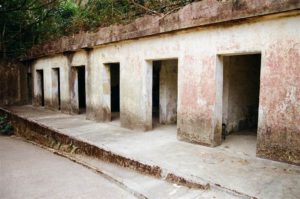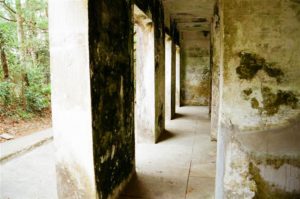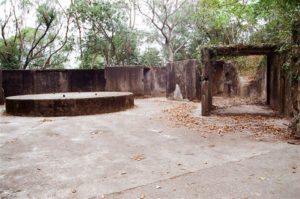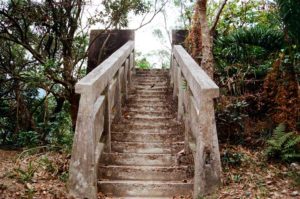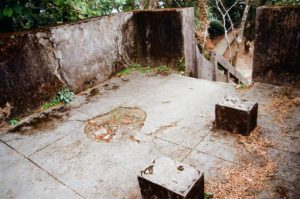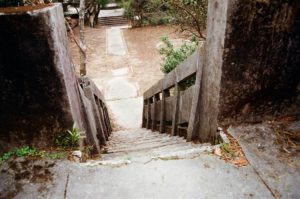The Pinewood Battery
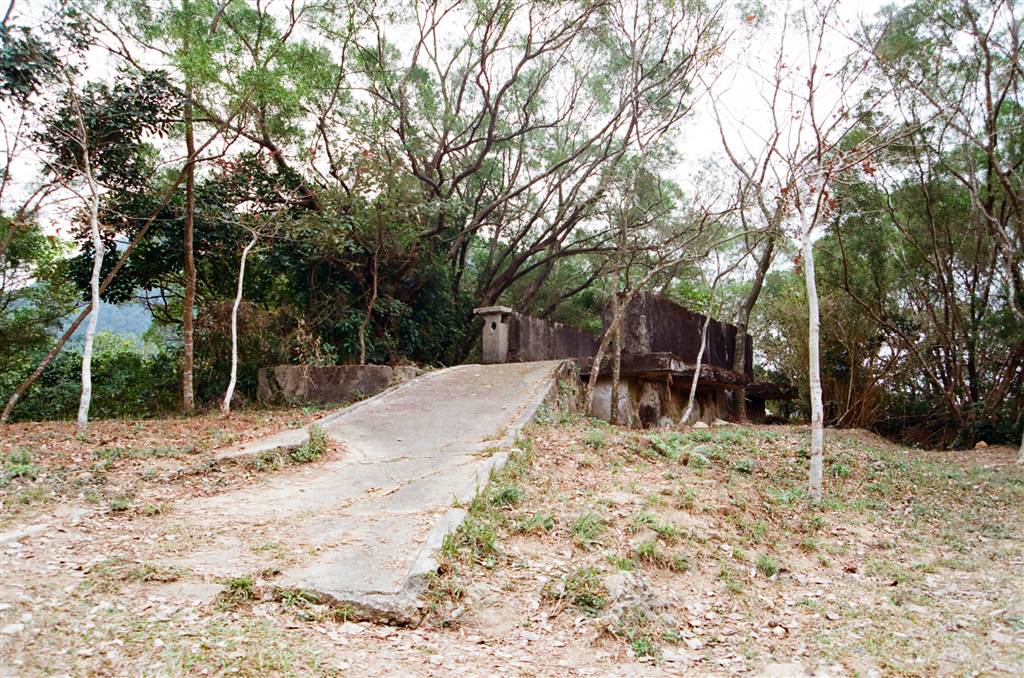
Perhaps with the exception of, broadly, British colonial rule and its return to China in 1997, Hong Kong is not well known for its history. Yet Hong Kong does celebrate its past, short though it might be.
This day I visited the Pinewood Battery to revisit WWII history. During WWII, the British defended Hong Kong against Japanese invasion. In 1941, it lost Hong Kong to Japanese rule for three years and eight months.
The Pinewood Battery is next to the Lung Fu Shan country park. We began our walk at Hatton Road, along the Lung Fu Shan Morning Trail. We walked for about 40 minutes on a gradual incline and saw the sign to Pinewood Battery.
The Pinewood Battery as Defensive Structure During WWII
The Pinewood Battery was built in the very early years of the 20th century. It had once served as the training camp grounds for Boy Scouts before serving military purpose during WWII.
Japan launched its offensive on Hong Kong on December 8, 1941. In just a couple days, Japanese forces had taken down the Shing Mun Redoubt on the Gin Drinkers’ Line, which was the defensive line for Kowloon, and effectively took control of Kowloon and the New Territories. Pinewood Battery was at the forefront of this episode, serving as the anti-aircraft defense of Hong Kong Island and the Victoria Harbor at the time.
Back in those days, the area surrounding the Pinewood Battery did not have the lush foliage like it is today. Actually, the area was rather barren. The military map of the Imperial Japanese Army indicates the location of Pinewood Battery. The enemy had always known its existence.
That became the main reason why the British forces quickly abandoned Pinewood Battery, perhaps just a few days to a week into its service. According to descriptions on site, “the Sperry Predictor was not fast enough in tracking enemy aircraft.” When the Japanese took over Kowloon, they could observe the Battery directly from the Kowloon side. On December 15, the Battery was “heavily shelled by the Japanese 14th Independent Heavy Field Artillery Regiment stationed in Ho Man Tin, forcing the gunners to abandon the position.”
There was an eerie feeling to the Battery. The signage demanded respect as some soldiers have died on this very site defending Hong Kong. Indeed, since its abandonment in 1941, the Pinewood Battery has remained in ruins to this day. At the site, one can still notice the original yellow and green camouflage paint on the structures.
A tour of the Pinewood Battery would take some 45 minutes if you are quite serious about reading the exhibits. The following is a quick virtual tour:
War Shelters
Where the gunners gathered when they were in “stand to” status, meaning ready for action, or otherwise when they were under heavy bombardment. The roofs are splinter-proof, which could shield the soldiers from shrapnel, but it would not withstand a direct shell bombardment.
Gun Platforms
Anti-aircraft guns with long firing range stationed at the Gun Platforms.
The Battery Command Post
The Command Post centrally directed the guns at the Gun Platforms. The Anti-Aircraft Command gave the fire orders over the telephones, the lines of which were all underground. In those times, this was a modern feature in Asia.
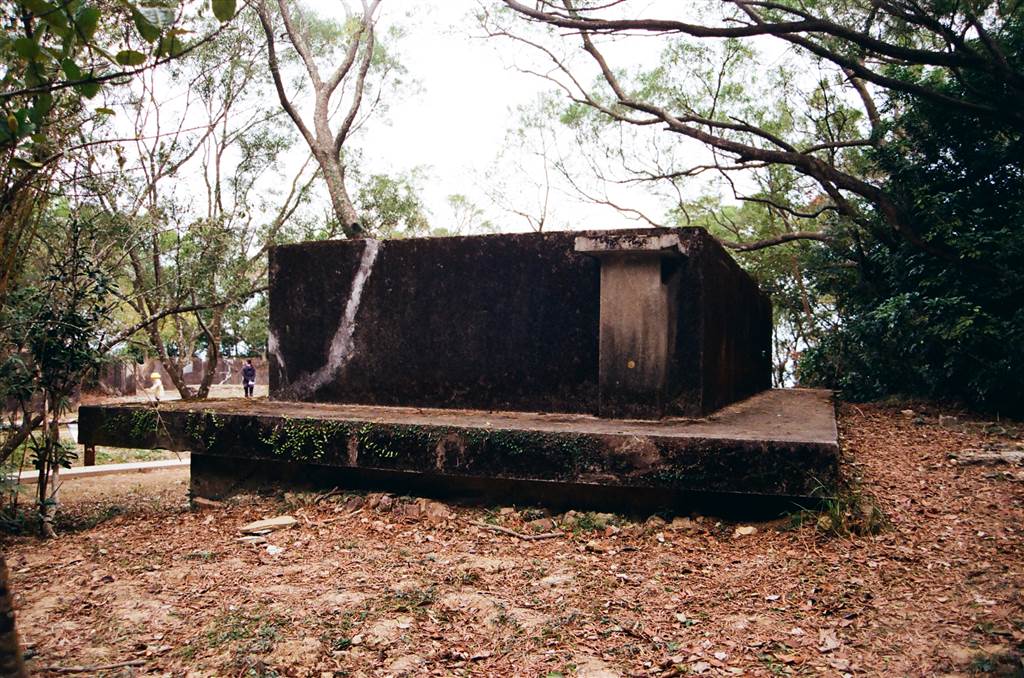
Observation Post
At the Observation Post, the Sperry Predictor would calculate the bearing and elevation of the guns and the fuse timing of the shells. “The point was not to hit the plane with the shell, but to have the shells exploded sufficiently close to the plane to cause damage.”
The Original Ground of the Pinewood Bungalow
This was the mess of the gunners that stationed at Pinewood Battery. The building was of a colonial style. It was demolished in 1948.
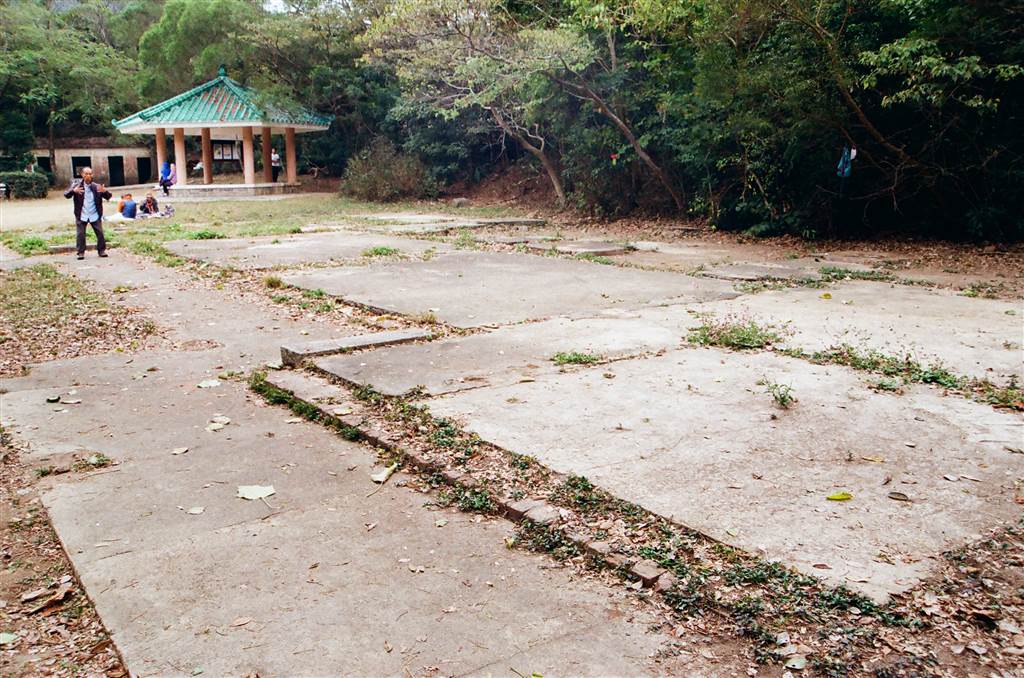
The City Boundary Stone
Finally, on our way back I noticed the City Boundary Stone of Victoria, with the wording “City Boundary 1903.” Under Hong Kong laws, the Interpretation and General Clauses Ordinance (Cap 1) Schedule 1 sets out the boundary of the City of Victoria. The Hong Kong Government then erected these boundary stones in 1903. There are, currently in existence, five other such boundary stones in Hong Kong, all intact and remain as historical relics.[1]
For the history of Victoria as the heart of governance in Hong Kong, see Wikipedia entry on Victoria here.
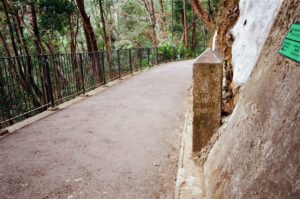
For the hikers out there, the Lung Fu Shan Morning trail takes you to the Peak, again on gradual incline. You will soon see the Lugard Loop. My friend and I sipped coffee up the newly renovated building at the Peak. The hike was easy, and an interesting history lesson made it a perfect day.
The historical descriptions of Pinewood Battery in this entry came from the exhibits on site at Pinewood Battery.
[1] Antiquities and Monuments Office, Boundary Stone of City of Victoria.

